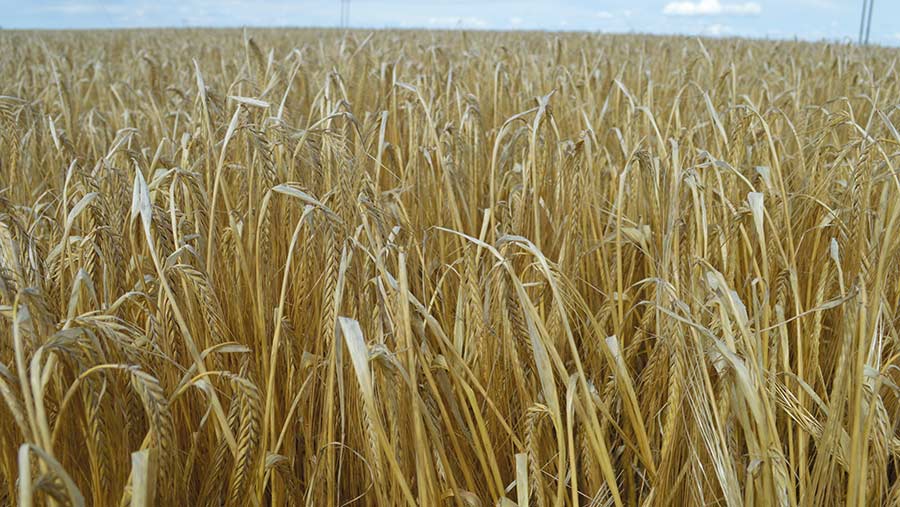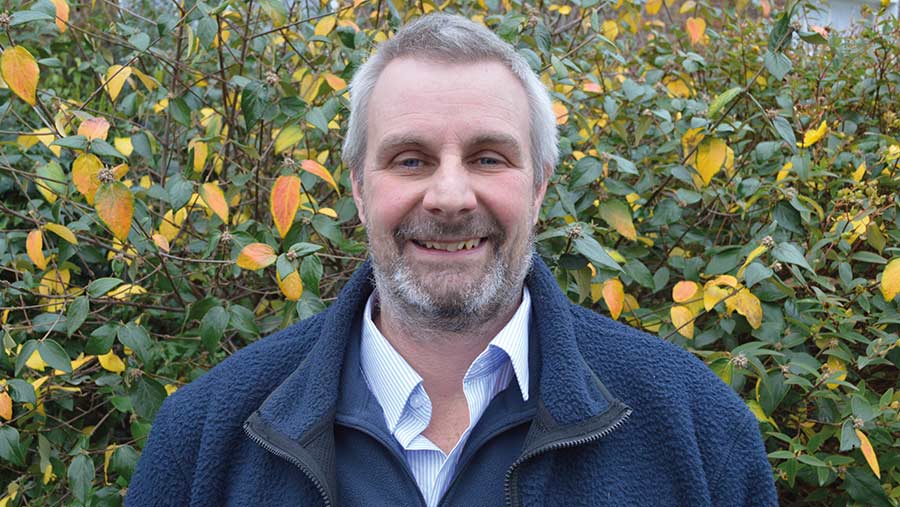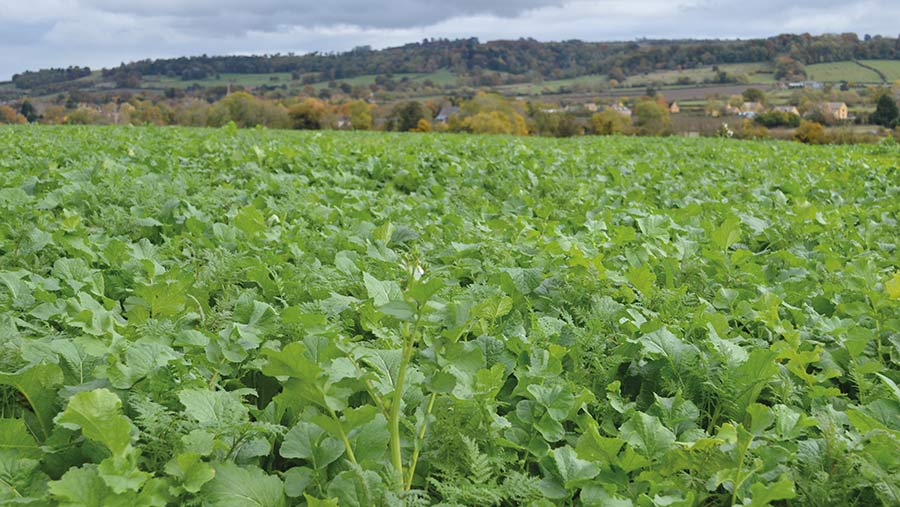Yorkshire barley growers plan for zero-carbon beer
 © MAG/David Jones
© MAG/David Jones A group of Yorkshire growers has banded together for a trial aiming for zero-carbon malting barley production to reduce the carbon footprint of John Smith’s beer.
They will be using cover and companion crops, and looking to use nitrogen fertiliser better in the heart of the Yorkshire Wolds – a major malting spring barley growing area – to cut their carbon emissions.
With barley production making up 30% of the carbon footprint of a pint of beer, Heineken, the owners of the John Smith’s brewery in Tadcaster, is determined to use barley that is grown sustainably, with the focus on spring-sown crops.
See also: How new carbon offset scheme for regenerative ag works

Tim Stubbings © MAG/David Jones
Tim Stubbings is a member of the farmer group, growing 60ha of the spring variety Laureate on lightly, chalky Wolds soil to produce 500t of malting grain annually.
He is hoping to produce the crop more efficiently and in a more environmentally friendly way.
“This is a way to sequester carbon and cut our nitrogen fertiliser use, which is especially relevant with nitrogen at such a high price,” he tells Farmers Weekly.
He farms some 450ha of arable land with his family at Old Hall Farm, Wold Newton, about 10 miles inland from Bridlington.
They grow 60ha of Laureate and a similar area of the winter malting barley Craft.
Spring malting barley is a very reliable crop on his light land farm, and the family has been supplying the Muntons malting plant at Bridlington on the Yorkshire coast since 1964.
Traditionally, he would apply 140kg/ha of ammonium nitrate on the Laureate, with half in the seed-bed and the other half at the three-leaf stage.
Cover crops
He has been growing cover crops for five to six years, and is hoping his mix will allow him to cut nitrogen fertiliser use by 30-40kg/ha next spring.
Ammonium nitrate nitrogen prices have more than doubled from £300/t in June to well north of £600/t due to rising energy prices and the resultant temporary closure of Britain’s two ammonium nitrate plants in late summer.
Mr Stubbings also hopes the cover crops will increase the organic matter in his light, chalky loam soils, leading to more consistent yields, and help crops thrive, even during a spring drought.
This autumn, he drilled 12ha of cover crops on 5-7 September, ahead of some of his spring barley crop.
Half is destined to be sprayed off with glyphosate before Christmas and the other half in January/February to see which approach works best on the farm.
The cover crop mix contains fodder radish, phacelia, buckwheat, red clover and winter oats, and is aimed at giving a range of different rooting systems and plant heights in the field, at a seed costs of about £35/ha.
Within the mix, the oats were included to give fibrous roots near the surface, phacelia and clover produce good lateral roots, and the fodder radish grows strong taproots to help with the structure of the soil.
Drilling date
Spraying-off is scheduled to take place at least six to eight weeks ahead of a likely spring barley drilling date, usually in early March, as a decaying cover crop can suck up nitrogen from the soil to decay before returning the N to a subsequent growing crop.
The cover crops followed a second winter wheat, cut at the end of August. The straw was baled and then the land shallow-cultivated before being drilled using the farm’s Amazone combination drill.
The cover crops will also play a valuable role to scavenge for nitrogen in the autumn, rather than risking N flowing into a watercourse, as the whole farm is in a nitrogen vulnerable zone.
“The trial will look to make barley production more sustainable and provide what the buyer, Heineken, wants,” Mr Stubbings adds.
Carbon reduction initiative
The barley-growing carbon-reduction initiative started in 2018, when Heineken, the biggest brewer in Britain, kicked off its “drop the C” campaign to reduce the carbon footprint of the beers it produces.
The Amsterdam-based brewer, which makes Foster’s and Birra Moretti, as well as John Smith’s and Heineken beers, is using this global campaign to cut its carbon emissions and capture carbon dioxide in the soil.
Paul Rhodes, director at agri-food consultant Future Food Solutions, says the 11 Yorkshire barley growers are trialling different techniques, backed by the brewer, such as growing cover crops to sequester carbon ahead of a following spring barley crop.
Carbon and nitrogen levels will also be assessed throughout the season.
“The idea is to use the cover crop to sequester enough carbon to counter the carbon footprint of the barley crop,” he says.
Cover crop destruction

© MAG/David Jones
They will be looking at the best time to destroy the cover crop without it getting too big, as with a tall cover crop the carbon to nitrogen ratio gets too high and the crop may struggle to break down quickly.
“The spray-off timing will be key, as the aim is that the release of nitrogen from the cover crops will feed the growing malting barley,” he adds.
Other farmers in the group will be trialling different techniques, such as growing a companion crop – like crimson clover – with the spring barley, and the hope is that the clover may fix nitrogen from the atmosphere and help the barley.
The maltster Muntons buys 36,000t of malting barley from a 50-mile radius around Tadcaster each year to process at its plant at Bridlington on the Yorkshire coast, and then supplies 30,000t of malted barley to Tadcaster, or 80-90% of the brewery’s annual needs.
Mark Ineson, the grain supply chain manager at the maltster, says he wants barley grain nitrogen of 1.6-1.75%, and is looking to buy spring barley varieties such as Laureate and Diablo, which can supply the brewing and distilling industries.
Muntons buys more than 250,000t of malting barley annually to supply its two malting plants at Bridlington and Stowmarket in Suffolk, and is looking for a further 25 Yorkshire growers for the programme.
It will then start to recruit growers in its Stowmarket growing area next year.


